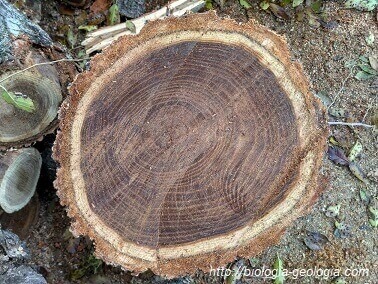Radiometric method
The radiometric method is based on the radioactivity produced by the disintegration of nuclei of atoms of unstable chemical elements that are transformed into other stable chemical elements. They transform into isotopes or different elements at a rate that can be calculated, while releasing energy.
For example, carbon 14 turns into nitrogen 14, and uranium 238 turns into lead 206.
The time it takes for an item to move from one form to another is always the same. Therefore, if we can know the initial amount of that item and the final amount, we can calculate the time that has passed.
Each radioactive element has a half-life or half-life (T), which is the time that elapses since the initial mass of a radioactive element is reduced by half. For example, carbon 14 has a half-life T = 5730 years, so a mass of 100 grams of C14, after 5730 years, will have been reduced to 50 grams. After another 5730 years, it will have been reduced to 25 grams, etc.
| Elapsed half-lives |
% of original nuclei not disintegrated |
| 0 |
100% (no core decayed) |
| one |
50% (half of the nuclei have disintegrated) |
| two |
25% (half of half of the nuclei remain undisintegrated) |
| 3 |
12.5% |
| 4 |
6.25% |
| ... |
... |
The half-lives of the most widely used radioactive isotopes are:
- Uranium 238 - lead 206, with T = 4.510 million years.
- Carbon 14 - nitrogen 14, with T = 5,730 years. It is used to date recent organic remains, up to 60,000 years old.
- Potassium 40 - argon 40, with T = 1.3 billion years. It is the most used, especially because it works with igneous rocks, rocks that are very abundant on Earth and act as traps, enclosing other types of rocks.
- Samarium 147 - neodymium 143, with T = 106,000 million years.
- Rubidium 87 - Strontium 87, with T = 47,000 million years.
